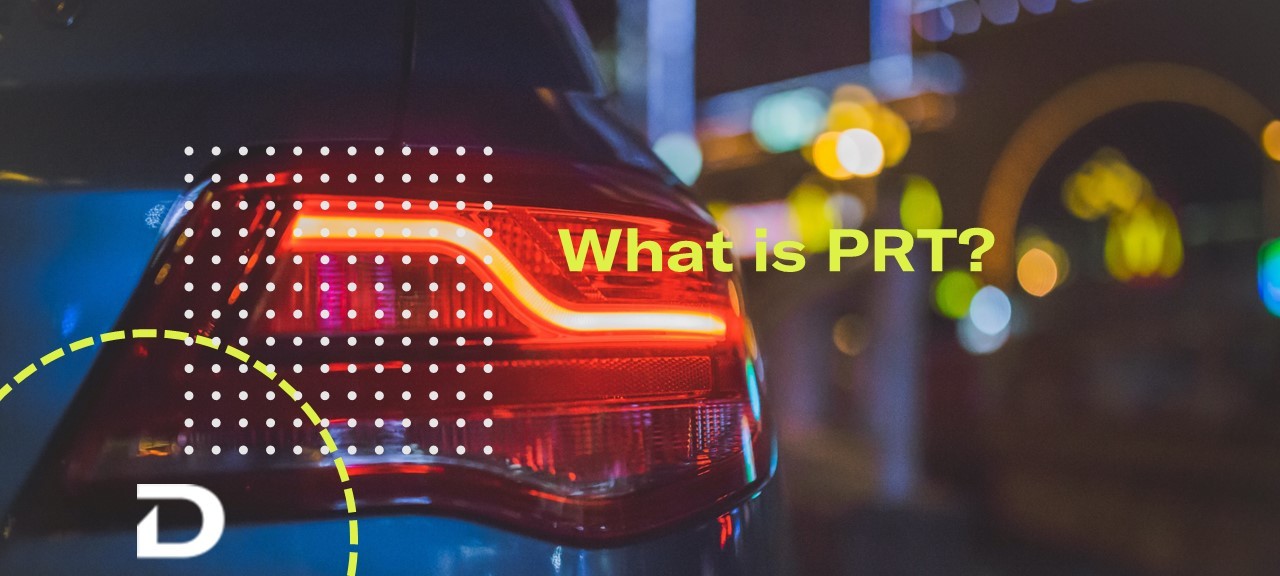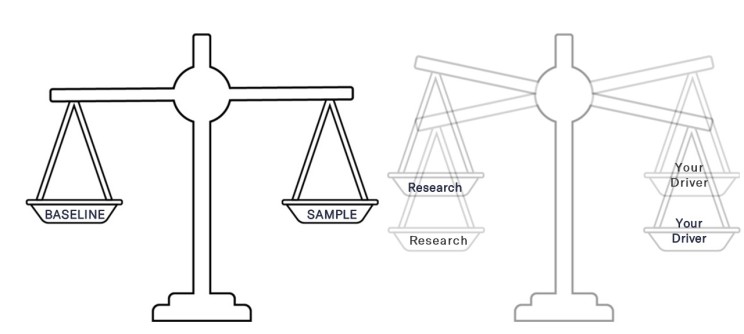
PRT is Perception Response Time. While often confused with reaction time, PRT is the time from when drivers recognize a hazardous scenario to when drivers start to respond in an evasive manner. PRT itself has comprised of different components as shown in the figure below. A prerequisite for us to measure PRT is the presence of a hazardous scenario. If drivers are not facing an emergency event, drivers do not respond. Every crash type has a different event onset from where response times were measured. E.g., if we have a nighttime crash, when did the driver recognize the dark clad pedestrian in the road? If you have a stopped vehicle, when was the looming threshold reached? Next we must know what component of a drivers response we are trying to measure. The article below is a brief description of what to keep in mind when talking about driver responses.

Phases of Driver Responses in Emergency Events
When do I start the clock?
When we measure PRT; a period of time, we have to know when to start the clock and when to stop it. In the real world, it would be nearly impossible to precisely determine the time of perception in the mind of each individual driver facing an emergency scenario. Additionally, every crash type may have a different event onset. Researchers found an ingenious way to address this. They used a fixed event onset to start the clock (pedestrian walking off the curb, car driving past the stop line, first lateral movement, looming threshold etc.) and measure PRT from there. Hence, instead of speculating when perception occurred, we simply report when drivers responded from when the event onset occurred.
Is there a best place to start the clock? Swaroop Dinakar set out to explore just that in the Turn-Across-Path study. He found that you could use any point (except for when hazard was first visible), just as long as you use the same point in your investigation. But the consensus based on our review of hundreds of studies, we use the point that was commonly used across different published studies.
When Do I Stop the Clock?
The very first action taken by a driver is the driver’s “reaction”, hence the term Reaction Time (RT). This includes driver taking their foot off the accelerator pedal or firsthand movement. Some dashcam footage may show a drivers’ expression change. That is a reaction. However, in the analysis of the SHRP-2 data we found no consistent relationship between a facial reaction and a driver’s actual evasive action.
After reacting, drivers now are engaged in executing their evasive maneuver. In order to do this, drivers have to move their foot from the accelerator to the brake pedal. Move their hands to turn the steering wheel. Drivers have also performed a combination of braking and steering. At the end of the movement time, we have Brake/Steering Response Time (BRT/SRT). While drivers could potentially accelerate to avoid a collision, this is an extremely rare response choice. In our review of the SHRP-2 data, we found that drivers accelerated to avoid a crash only in cut-off events, and a majority of the time, it was more a chastising maneuver as opposed to an evasive maneuver.
Once a driver has responded, we have to account for the response latency of the vehicle itself. While some vehicles and test conditions show a latency of 0.1s, most drivers in the real world have needed approximately 0.3s to obtain hard braking. Tractor trailers have needed near 0.5s to obtain hard braking. The sum of the three components is Perception Response Time (PRT).
At the end of PRT, the vehicle takes over. Any pre-impact maneuver, like swerving distance or stopping distance are not a part of PRT.
Is PRT 1.5 seconds?
No. It depends on your crash scenario. (Muttart; J)
The use of a single PRT number is not appropriate for four main reasons
1. It does not address the different starting points.
2. It does not address the different ending points.
3. It assumes all crash scenarios are the same.
4. It does not account for error rate. There is a distribution to human responses.
When Should I use RT vs. BRT vs. PRT?
In the simplest of terms, RT, when we have throttle release time. We use BRT when we want to compare when the drivers’ brake switch was activated. Hence RT or BRT are great measures to address EDR reports, witness dashcams and traffic cameras. We use PRT when we want to compare when drivers achieved full braking (tire marks) or swerving.
The Classical Scientific Methodology
Throughout this article, you will notice that I refer to response time in the past tense. This is because the response times we report are based on research that has been conducted. This forms our baseline. You will also recognize that we don’t predict PRT or apply the PRT to your driver whose performance we are evaluating. This is because the subject driver is our sample. Following a Classical Scientific Methodology, we simply compare our sample to our baseline and determine if our driver responded within the normal range of responses.

Comparative analysis with the Classical Scientific Methodology
Interested in learning more? We have published research studies and multiple human factors training courses throughout the year. Visit our website for more information about our class schedules.
Article by
Swaroop Dinakar
Managing Scientist, Human Factors
Driver Research Institute
Los Angeles, CA




